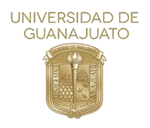
Guanajuato, Gto., July 17, 2019.- Dr. Gloria Angélica González Hernández is one of the heads of the Laboratory of Molecular Genetics of Fungi of the Department of Biology of the Division of Natural and Exact Sciences of the Guanajuato Campus of the University of Guanajuato (UG), where they have developed biopesticides from the ability of fungi of the genus Metarhizium to attack insects that prey on agricultural crops.
This promotes the better development of plants, reducing the use of chemical pesticides by reducing pollution and environmental damage. Since chemical pesticides are harmful to health and the environment. Additionally, due to the low cost of biopesticides compared to chemical pesticides, their use in pest control sharply lowers the costs of agricultural production.
Dr. González is a research professor in the Department of Biology of the Division of Natural and Exact Sciences of the Guanajuato Campus, and is a member of the National System of Researchers Level I; she, her colleagues and her students have extensively studied entomopathogenic fungi, specifically the fungus Metarhizium and its related species to attack pest problems in agronomy.
This fungus attacks insects that are pests in agriculture, without damaging other types of beneficial insects such as butterflies or bees. On the usefulness of the fungus, the researcher said that "our initial interest in this fungus, in Metarhizium, is because of one of the characteristics it has, in the field it is able to interact with certain insects specifically, invades them and can cause them death, then, that interesting feature is what has made it a good biopesticide, a good alternative for pest control, since it turns out that this fungus is able to recognize more than 200 different species of insects that are usually pests in the Agriculture. Although it can also recognize and kill, for example, urban pests such as cockroach and disease transmitters to humans such as Anopheles gambiae (Malaria transmitting mosquito)".
Dr. González Hernández has developed her research with these biopesticides microorganisms and the working group has linked the results in the laboratory with the mass production of new biopesticides that are beginning to be applied in agreement with the Guanajuato State Plant Health Committee (CESAVEG); In this regard, Dr. González Hernández mentioned that "we started a collaboration with them, aiming that the strains that we see are good for the control of certain pests, can be used by them in the campaigns that they have against the different pests in the state."
One thing that is always sought in insecticides is its specificity, that is, that affects only the species that you want to fight and is harmless to others. Chemical insecticides lack this specificity and therefore kill different insects, such as bees, and also accumulate in the fat tissue of vertebrates, including man. In addition, chemical insecticides usually have a residual action, so they can remain in the environment long after fumigation or application has occurred.
The goal is to replace chemical pesticides with fungal biopesticides, as they are safe for animals or people. Another important feature is that there are environments that are suitable for natural reproduction of this fungus. By remaining the new biopesticide in residual form, it makes it possible for successive doses of application to be lower, thus reducing costs for the producer.
Photo gallery







